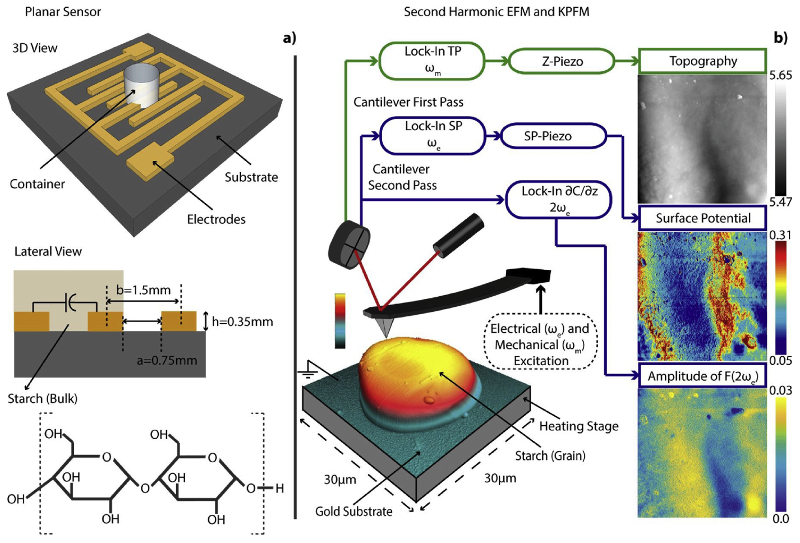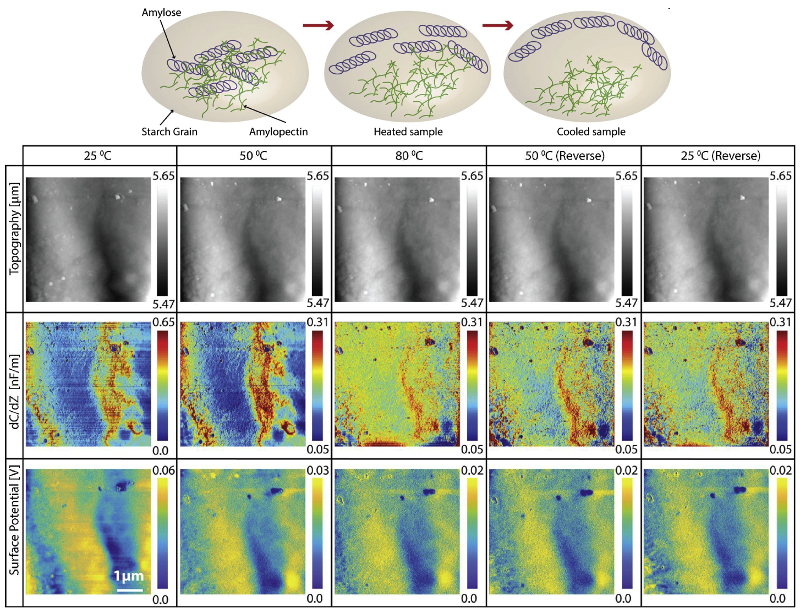AFM Systems
AFM Accessories
Learning
Contact Us
 Part of the Oxford Instruments Group
Part of the Oxford Instruments Group
U. K. and Colombian researchers investigated how temperature, humidity, and frequency affects the relative permittivity of wheat starch. Characterization with both AFM nanoelectrical tools and macroscale capacitance sensing gave deeper insight into this key metric for determining starch electrostatic hazards.

Starch is widely used throughout the food, entertainment, and pharmaceutical industries. While not generally considered hazardous, starch-based powders have recently caused dust explosions that resulted in severe injuries and loss of life.
Preventing future explosions requires a deeper understanding of how insulating starch grains become electrically charged under various environmental conditions. Researchers at Imperial College London in the U. K. and Manuela Beltrán University and University of Los Andes in Colombia investigated this topic using both macro- and microscale techniques.
Interdigitated-electrode capacitance measurements were made on bulk starch samples over a range of electrical frequency (10-100 kHz) and relative humidity (26-41% RH). AFM nanoelectrical imaging was performed on individual starch grains during a heating and cooling cycle (25-80 °C).
The results provide insight into the role of surface effects such as tribocharging in dust cloud ignition and dynamics. Consequently, this work could enable guidelines for safer starch storage and improved simulations of explosion phenomena.

MFP-3D BIO with PolyHeater
The topography and local electric properties of individual starch grains were characterized on an MFP-3D BIO AFM equipped with a PolyHeater high-temperature sample heater. The PolyHeater provides exquisite temperature control for experiments from ambient to 300 °C in air or a controlled gas environment. Here, samples were imaged over the course of a heating/cooling cycle with steps at 25 °C, 50 °C, 80 °C, 50 °C, and 25 °C. At each step, the capacitance gradient dC/dz was determined with second-harmonic electrostatic force microscopy (EFM) techniques, and the tip-sample surface potential was imaged in Kelvin probe force microscopy (KPFM) mode.
Citation: J. Seidel, O. Castañeda-Uribe, S. Arevalo et al. Relative permittivity estimation of wheat starch: A critical property for understanding electrostatic hazards. J. Hazard. Mater. 368, 228 (2019). https://doi.org/10.1016/j.jhazmat.2019.01.047
Note: The data shown here are reused under fair use from the original article, which can be accessed through the article link above.
Author: Asylum Research
Category: Technical Article
